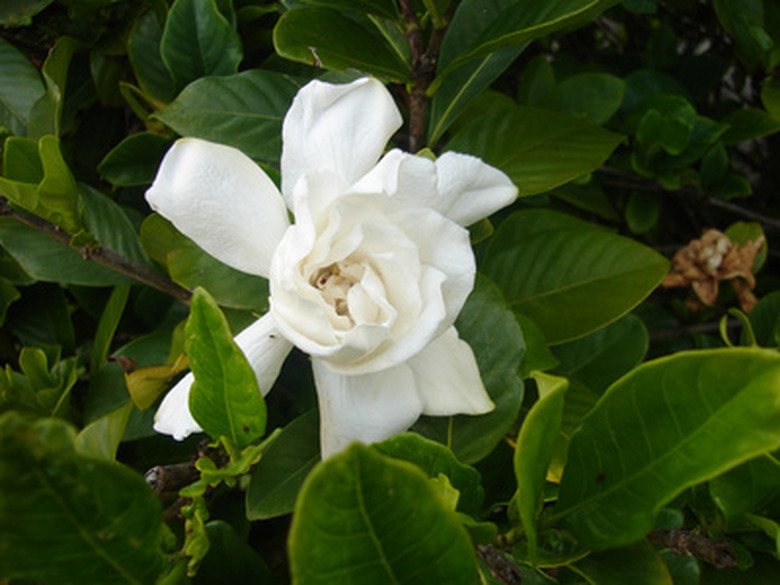How To Fertilize Gardenia Bushes
Things Needed
- Sphagnum peat moss mulch
- Iron sulfate
- Water-soluble fertilizer
- Acid fertilizer
Many gardeners avoid cultivating gardenia bushes because of their maintenance requirements. They can be fussy, and they're very heavy feeders. Without adequate nutrition, gardenias may even refuse to bloom. The answer is a regular feeding program. It's true that gardenias demand some extra tender-loving care. On the other hand, the stunning blooming displays and heady, captivating fragrance can make it all worthwhile.
Step 1
Mulch your gardenia bush with a 2- to 4-inch layer of sphagnum peat moss in early spring. The peat acts as an organic fertilizer to slowly provide the plant with a steady supply of acid, helping maintain a healthy pH level. Sphagnum peat gradually releases acid into the soil as it decomposes, making it a far superior mulch for acid-loving plants such as gardenias. Grass clippings, leaves and tree trimmings typically don't produce acidic products when they decompose.
- Many gardeners avoid cultivating gardenia bushes because of their maintenance requirements.
- The peat acts as an organic fertilizer to slowly provide the plant with a steady supply of acid, helping maintain a healthy pH level.
Step 2
Sprinkle iron sulfate around your gardenia until you can't see the mulch anymore. This will harmlessly prevent "iron-poor blood" in your plant. Inadequate iron levels in the soil can cause your gardenia's leaves to turn yellow. Follow the manufacturer's recommendations carefully. It's difficult to overdose with this nutritional supplement, since the ground quickly deactivates the iron molecules. A typical application is about 1 cup of iron sulfate per bushel of mulch applied.
Step 3
Test your gardenia's soil pH once monthly. These acid-loving plants require a pH level between 4.5 and 5.5. If the level is higher than that, the soil composition is too alkaline for healthy gardenias. They won't be able to process and utilize fertilizer. Adjust the pH as necessary to maintain the proper level.
- Sprinkle iron sulfate around your gardenia until you can't see the mulch anymore.
- It's difficult to overdose with this nutritional supplement, since the ground quickly deactivates the iron molecules.
Step 4
Feed your gardenia bush a water-soluble fertilizer for blooming plants every two weeks throughout the growing season. Follow the packaging instructions carefully.
Step 5
Fertilize with an acid food for azaleas once monthly from April through November. Follow the manufacturer's instructions.
